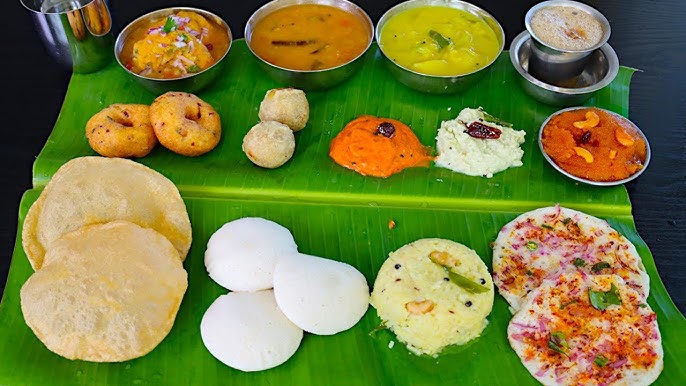
by Trailerman Sam (tapessam@gmail.com)
Imagine the vibrant colours and aromas filling the air – and no Deepavali is truly complete without the traditional banana leaf meal.
This time-honoured custom thrives in Hindu families, creating a tapestry of flavours and community spirit that has persisted through the ages.
The day often begins with crispy thosai or fluffy idlis—sometimes both, if the cook is feeling particularly inspired and energetic!
As appetites grow, the table transforms into a feast featuring rich biryani and an array of vegetarian and non-vegetarian dishes.
Beyond everyday meals, banana leaf feasts are a highlight at weddings and family gatherings, embodying the essence of celebration.
In addition to their cultural significance, they are biodegradable and environmentally-friendly, making them a sustainable choice for serving food.
Do you know about the origins of the use of banana leaves in Indian cuisine? From my own findings, archaeological evidence found banana leaves were used as plates and bowls for serving food as early as 2000 BC. Over time, this practice spread to various parts of India and became an integral part of Indian culture.
There is this fascinating story in Indian culture about a sage named Rishi Durvasa, who once cursed his wife and turned her into a plant for disturbing his sleep. Later, she requested to be treated well and was transformed into a banana plant! Which is why its leaves are also used for religious purposes for they are frequently used to present offerings to deities, reflecting devotion and purity.
Scientifically, banana leaves contain polyphenols, which are organic antioxidants. These polyphenols are believed to fight off harmful bacteria in the body and help protect against illness.
Some might question are banana leaves hygienic enough to be used to serve or wrap food. Banana leaves do not require a lot of cleaning. They just need to be rinsed with a little water and are ready for use.
If you’re eating at a place where hygiene standards are questionable, you’re much better off eating from a banana leaf than from a plate that has not been cleaned properly.
Banana leaves, being large, flexible and having a wax-like coating, are also “waterproof” with antibacterial properties for their wax-like textures help prevent dirt from sticking. Banana leaf “plates” are both economical and environmentally-friendly.
When used for cooking or serving, a sweet aroma and transmits a subtle flavour. Banana leaves can retain liquids, making it an ideal cooking wrapper for most dishes you can think of. But the leaves themselves are not eaten and are typically discarded after the food is consumed!
A great way to enjoy a curry is have it on a banana leaf, which in a way enhances the dining experience with its unique flavours and presentation. Somehow, there are certain unwritten rules to follow once you’ve finished your banana leaf meal. Call it the righteous banana leaf etiquette.
If you’ve enjoyed your meal, fold the top half of the leaf down towards you to the bottom half. This gesture signals to the cook and his team that you’re satisfied and well fed.
It is considered an insult to people preparing and serving food if you were to fold it away from you, especially during auspicious occasions like weddings. But folding the banana leaf from the bottom to the top is the right or appropriate way during sad occasions like funerals or anything to do with a departed soul. It signifies that “this is our last meet” or farewell to the departed.
In Malaysia, these South Indian traditions hold tremendous significant cultural importance and has been adapted to the local scene as well. Therefore, on happy occasions, folding the banana leaf towards you means to strengthen the relationship or have a reason for the feast to be repeated.
These days the banana leaf, seen as a symbol of purity, also represents diversity and integration of its use by different communities in Malaysia’s culinary heritage like the Malay nasi lemak or Chinese steamed fish.
In many Indian households, serving food on a banana leaf is a profound way to show respect and hospitality to guests. As we celebrate Deepavali this year, let’s savour our meals and remember to share our blessings with those less fortunate, acknowledging those who have stood by us in times of need — by shedding our pride and ego.
Wishing You a Joyful Deepavali! Enjoy your banana leaf meal — it’s more than just food; it’s a celebration of culture, community, and connection!
WE